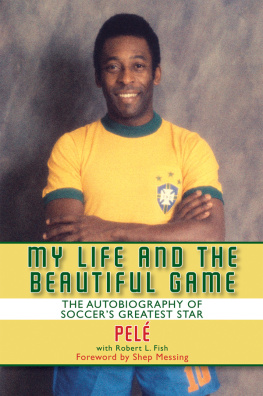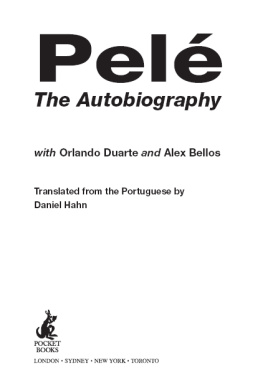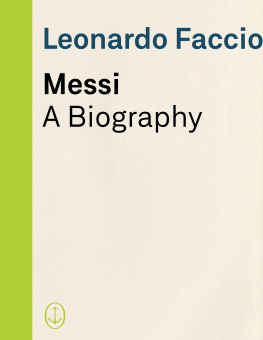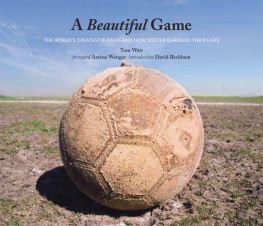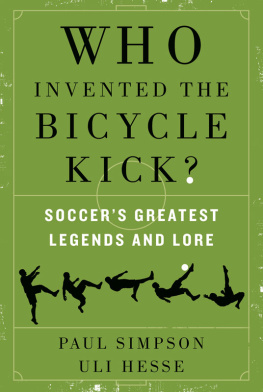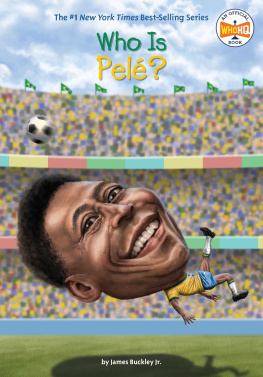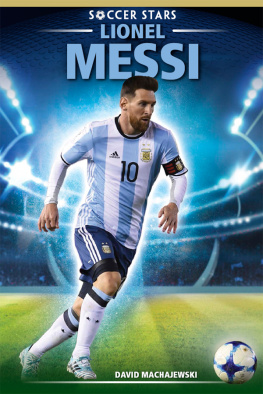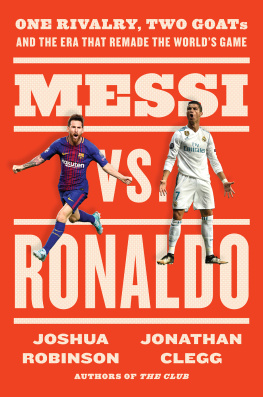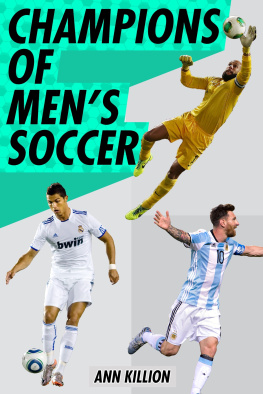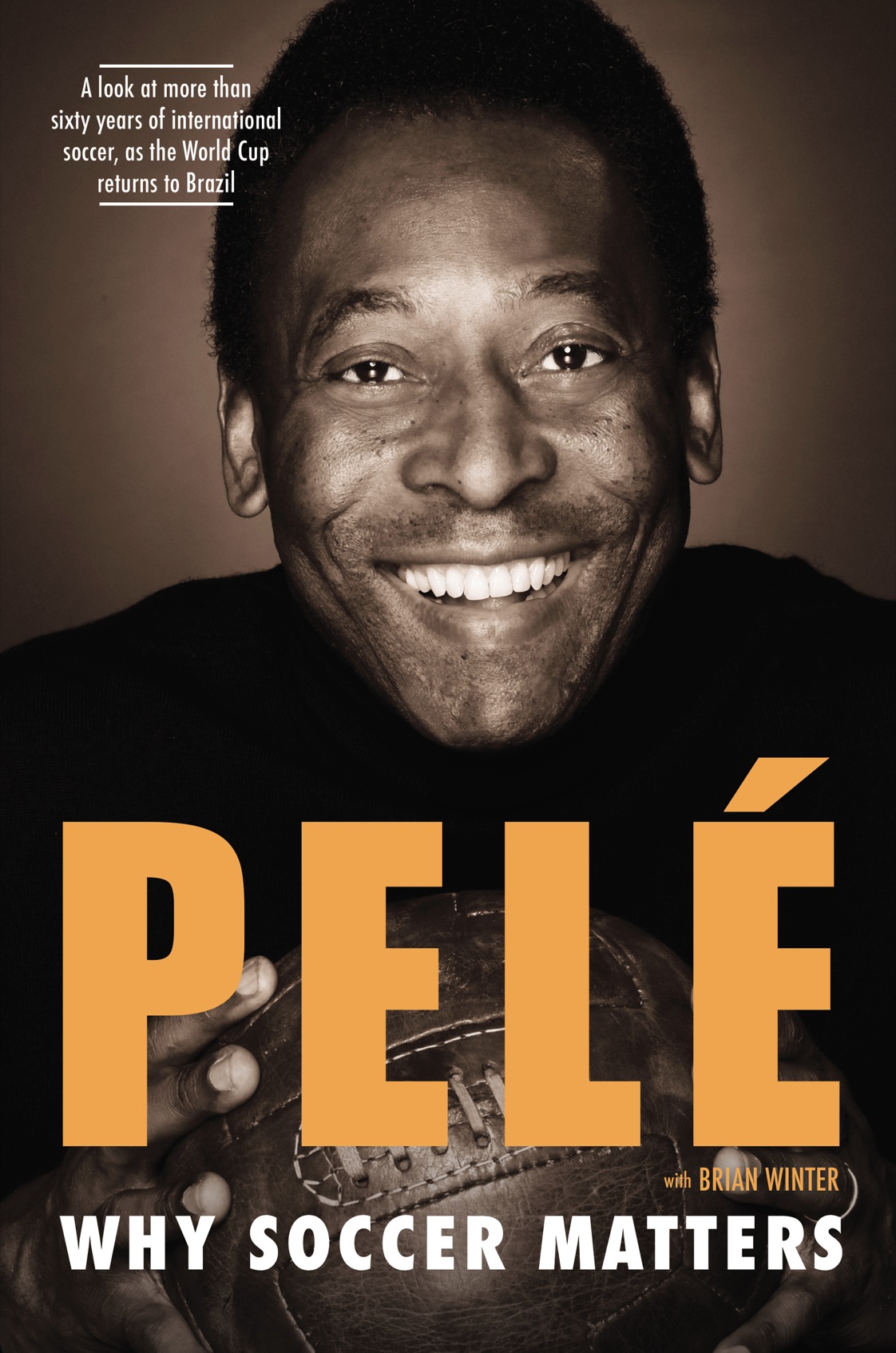Introduction
I close my eyes, and I can still see my first soccer ball.
Really, it was just a bunch of socks tied together. My friends and I would borrow them from our neighbors clotheslines, and kick our ball around for hours at a time. Wed race through the streets, screaming and laughing, battling for hours on end until the sun finally went down. As you might imagine, some people in the neighborhood werent too happy with us! But we were crazy for soccer, and too poor to afford anything else. Anyhow, the socks always made it back to their rightful owner, perhaps a bit dirtier than we originally found them.
In later years, Id practice using a grapefruit, or a couple of old dishrags wadded together, or even bits of trash. It wasnt until I was nearly a teenager that we started playing with real balls. When I played in my first World Cup, when I was seventeen years old in 1958, we used a simple, stitched leather ballbut even that seems like a relic now. After all, the sport has changed so much. In 1958, Brazilians had to wait for up to a month if they wanted to see newsreel footage in theaters of the championship final between Brazil and the host team, Sweden. By contrast, during the last World Cup, in 2010 in South Africa, some 3.2 billion peopleor about half the planets populationtuned in live on television or the Internet to watch the final between Spain and the Netherlands. I guess its no coincidence that the balls players use today are sleek, synthetic, multicolored orbs that are tested in wind tunnels to make sure they spin properly. To me, they look more like alien spaceships than something youd actually try to kick.
I think about all these changes, and I say to myself: Man, Im old! But I also marvel at how the world has evolvedlargely for the betterover the last seven decades. How did a poor black boy from rural Brazil, who grew up kicking wadded-up socks and bits of trash around dusty streets, come to be at the center of a global phenomenon watched by billions of people around the world?
In this book, I try to describe some of the awesome changes and events that made my journey possible. I also talk about how soccer has helped make the world a somewhat better place during my lifetime, by bringing communities together and giving disadvantaged kids like myself a sense of purpose and pride. This isnt a conventional autobiography or memoirnot everything that ever happened to me is contained in these pages. Instead, Ive tried to tell the overlapping stories of how Ive evolved as a person and a player, and a bit about how soccer and the world evolved as well. Ive done so by focusing on five different World Cups, starting with the 1950 Cup that Brazil hosted when I was just a small kid, and ending with the event that Brazil will proudly host once again in 2014. For different reasons, these tournaments have been milestones in my life.
I tell these stories with humility, and with great appreciation for how fortunate Ive been. Im thankful to God, and my family, for their support. Im thankful for all the people who took the time to help me along the way. And Im also grateful to soccer, the most beautiful of games, for taking a tiny kid named Edson, and letting him live the life of Pel.
EDSON ARANTES DO NASCIMENTO
PEL
SANTOS, BRAZIL
SEPTEMBER 2013
BRAZIL, 1950
1
Goooooooooallllllllllll!!!!!!!!
We laughed. We screamed. We jumped up and down. All of us, my whole family, gathered in our little house. Just like every other family, all across Brazil.
Three hundred miles away, before a raucous home crowd in Rio de Janeiro, mighty Brazil was battling tiny Uruguay in the final game of the World Cup. Our team was favored. Our moment had come. And in the second minute of the second half, one of our forwards, Friaa, shook off a defender and sent a low, sharply struck ball bouncing toward goal. Past the goalie, and into the net it went.
Brazil 1, Uruguay 0.
It was beautifuleven if we couldnt see it with our own eyes. There was no TV in our small city. In fact, the first broadcasts ever in Brazil were occurring during that very World Cupbut only in Rio. So for us, as for most Brazilians, there was just the radio. Our family had a giant set, square with round knobs and a V-shaped antenna, standing in the corner of our main room, which we were now dancing around madly, whooping and hollering.
I was nine years old, but I will never forget that feeling: the euphoria, the pride, the idea that two of my greatest lovessoccer and Brazilwere now united in victory, the best in the entire world. I remember my mother, her easy smile. And my father, my hero, so restless during those years, so frustrated by his own broken soccer dreamssuddenly very young again, embracing his friends, overcome with happiness.
It would last for exactly nineteen minutes.
I, like millions of other Brazilians, had yet to learn one of lifes hard lessonsin life, as in soccer, nothing is certain until the final whistle blows.
Ah, but how could we have known this? We were young people, playing a young game, in a young nation.
Our journey was only beginning.
2
P rior to that dayJuly 16, 1950, a date that every Brazilian remembers, like the death of a loved oneit was hard to imagine anything capable of bringing our country together.
Brazilians were separated by so many things back thenour countrys enormous size was one of them. Our little city of Baur, high on a plateau in the interior of So Paulo state, seemed a world away from the glamorous, beachside capital in Rio where the last game of the World Cup was taking place. Rio was all samba, tropical heat and girls in bikiniswhat most outsiders imagine when they think of Brazil. Baur, by contrast, was so cold on the day of the game that Mom decided to fire up the stove in our kitchenan extravagance, but one she hoped would help heat up the living room and keep our guests from freezing to death.


